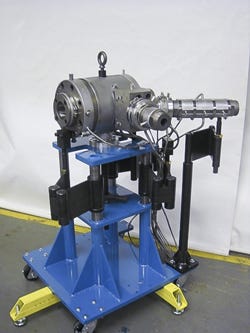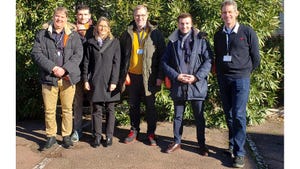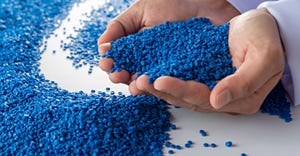Guill Tool introduces Series 725 co-extrusion crosshead design
Guill Tool & Engineering Co. Inc. (West Warwick, RI) announced the introduction of its Series 725 co-extrusion crosshead design for tray cable applications. With all stainless-steel construction, the Series 725 offers machine builders and end users a number of advantages, including the patented Guill Seal Right system of self-aligning, tapered deflector and body design.
August 17, 2015
Guill Tool & Engineering Co. Inc. (West Warwick, RI) announced the introduction of its Series 725 co-extrusion crosshead design for tray cable applications. With all stainless-steel construction, the Series 725 offers machine builders and end users a number of advantages, including the patented Guill Seal Right system of self-aligning, tapered deflector and body design.
 Series 725 was developed by Guill's engineering team in partnership with a customer to convert a Tandem line with two separate heads into a co-extrusion line with a single head applying both layers of PVC in a single operation. The efficiency and improved profit potential from such a configuration is substantial, according to Guill.
Series 725 was developed by Guill's engineering team in partnership with a customer to convert a Tandem line with two separate heads into a co-extrusion line with a single head applying both layers of PVC in a single operation. The efficiency and improved profit potential from such a configuration is substantial, according to Guill.
Other end user benefits of this new co-extrusion crosshead include a considerably shorter changeover time (one head is better than two, in this case), less scrap and improved product quality because of increased adhesion between layers, as melt adheres to melt rather than extrudate. Moreover, the inner layer is not exposed to the environment, preventing contaminates between the layers.
Additional features include multi-port spiral flow, easy disassembly and restart and positive seals for leak elimination. It is adaptable to all extruder brands, has a maximum through-core of 1.750 in. and maximum die inner diameter of 2.000 in. The first layer is fixed while the second is adjustable, and the system is equipped with the patented Guill Feather Touch concentricity adjustment and a vacuum port. It can accommodate two extruders from the same side via a heated manifold assembly.
About the Author(s)
You May Also Like




